Sylvia Pankhurst: Activist with Attitude
As a little girl growing up in Woodford Green, cheap on the fringe of Epping Forest, viagra just before World War Two, cough I was warned by my very conventional Conservative parents to walk on the other side of the road when I passed a mysterious Edwardian house. The house lurked behind overgrown hedges, near the railway station. I had no idea who lived there. I was just aware, from overhearing shocked, grown-up conversations, that its owner shopped at the Co-op on the socially- inferior ‘other side of the line’ rather than at Sainsburys, that she was living ‘in sin’ with an Italian and that they had a ‘love child’—whatever that was.
I learned much later that this scandalous woman was Sylvia Pankhurst—political radical, suffragist, pacifist, writer and artist—and one of the most remarkable women of her remarkable generation. Her partner, Silvio Corio, was an Italian socialist and revolutionary.
In a BBC broadcast, George Bernard Shaw once compared Sylvia to Joan of Arc:
She lectured, talked, won and over-ruled statesmen and prelates. She pooh-poohed the plans of generals leading their troops to victory… she had unbounded and quite unconcealed contempt for official opinion, judgement and authority and there were only two opinions about her. One was that she was miraculous. The other that she was unbearable.
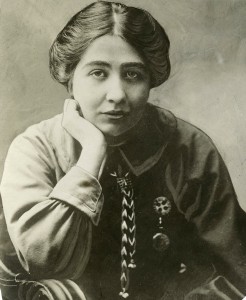
Sylvia Pankhurst, courtesy of Hornbeam Publishing Limited
The public memory of Sylvia Pankhurst has been largely overshadowed by that of her indomitable mother Emmeline and her spectacular elder sister, Christabel. But Sylvia’s work on the international stage continued long after their suffragette fight for the vote was won. During much of her time in Woodford she led the campaign against fascism and the occupation of Ethiopia by Italy, and she was one of the first to warn about the dangers inherent in the rise to power of Hitler and Mussolini.
Sylvia left England in 1956 to live in Addis Ababa at the invitation of the Emperor Haile Selassie. When she died five years later, the Emperor gave her a state funeral which attracted thousands of mourners along the way. Tributes poured in from leading figures all around the world. However the newspaper in Woodford, where she had lived for over thirty years, managed just a short single column obituary.
Sylvia Pankhurst provoked admiration and dismay in equal measure. In this, at least, she lived up to the legacy of her progressive—although thoroughly middle-class—parents. Sylvia’s father was the barrister Dr Richard Pankhurst, a socialist, atheist and life-long worker for women’s rights; her mother Emmeline, poor law guardian and future founder of the militant suffragette movement, was no less free-thinking. Sylvia’s childhood was spent mostly in Manchester as part of a household immersed in politics and buzzing with lively debate. Friends such as William Morris, George Bernard Shaw, the American suffragist Harriot Stanton Blatch and Keir Hardie, founder of the Independent Labour Party (ILP), all met there regularly. The Pankhurst children’s formative years were shaped not by toys or games, but by the growth of the socialist movement. Sylvia and her siblings, including sisters Christabel and Adela, were drawn into their parents’ circle and, wearing their best clothes, served teas, kept diaries and listened to what was going on.
Female emancipation was a hot topic in the late-eighteenth and nineteenth centuries, sparked not least by Enlightenment thinker Mary Wollstonecraft’s classic feminist text A Vindication of the Rights of Woman (1792). Yet by the time Sylvia was born in 1880, although married women in Britain had been allowed by law to keep their own earnings for some ten years, as a general rule they still could not own property. This was because, in the eyes of the law, a married woman did not ‘exist’ but was subsumed within the person of her husband. An Act of 1870 had given wives their earnings, but it was not until the Married Women’s Property Act of 1882 that they could own property in their own right. (Sylvia’s father Richard had drafted the bill which formed the basis of this Act back in 1868.) Neither were women anywhere near winning the national vote, although unmarried female ratepayers could vote in some local elections after the Municipal Franchise Act of 1869. Women were also permitted to stand for election as poor law guardians and for school boards. The accession of Queen Victoria to the throne in 1837 did little to help for the Queen was implacably opposed to female franchise: ‘Let women be what God intended—helpmeets to men—but with totally different duties’. Slowly however, determined crusaders began to blaze a trail towards greater opportunities and freedoms for women. Sylvia came of age at a time of great excitement and anticipation as the women’s movement began to make its voice heard.
In 1885 Sylvia’s father stood as candidate for the ILP in the Rotherhithe by-election. With Emmeline at his side, he spoke to large crowds from a specially-made soap box. But he lost. Sylvia wrote later in her book The Suffragette Movement: An Intimate account of Persons and Ideals (1931) that ‘Our father was the standard bearer of every forlorn hope, every unpopular yet worthy cause then conceived for the uplifting of oppressed and suffering humanity’. Her adult life was driven by his words: ‘If you do not work for others, you will not have been worth the upbringing’. When Richard Pankhurst died unexpectedly of a perforated ulcer in 1898, Sylvia was devastated. The years that followed were hard – Dr Pankhurst left no money and to support the family Emmeline threw herself into a number of unsuccessful business ventures and charitable works.
At this time Sylvia was mostly concerned with becoming an artist. She won a scholarship to the Manchester School of Art in 1898 and, a few years later, to London’s Royal College of Art in Kensington. For Sylvia (and the rest of the Pankhurst family) 1903 was a crucial year. This was when she was invited to decorate the interior of a hall in Salford which was to be opened in honour of her father, only to discover that women were excluded from the ILP branch it was designed to house. Emmeline was furious – this was the spark she needed. On October 10 1903 Emmeline called a meeting at the Pankhurst home, 62 Nelson Street, Manchester, and formed the Women’s Social and Political Union (WSPU). Their motto—Deeds not Words—should have warned the world that this was to be no genteel, pacifist movement.
For the next ten years Sylvia’s life was dedicated to the suffragette cause. Originally all the Pankhurst girls supported their determined and, at times, authoritarian mother. For Christabel, with her charisma and organisational skill, this was the career she had been born for. For Sylvia however, the issues were more complex. She found herself becoming uneasy about her mother’s distancing of her organisation from the ILP (which had worked closely with the WSPU in the beginning) and she was particularly concerned about suffragette criticism of Keir Hardie.
Hardie had slipped, unobtrusively, into Sylvia’s life. In his comfortably-cluttered room off Holborn’s Fetter Lane, she found the warmth and affection she had missed since her father died. With his mass of white hair and kindly eyes, Hardie had a messianic quality. Sylvia was his disciple and, as he grew to trust her more and more, they worked together planning parliamentary bills and speeches. Although never publicly discussed, their friendship blossomed—certainly for Sylvia—into love. From the extant letters between them it is clear that their relationship was important to both; however Hardie was married with a wife in Scotland to whom he always returned when under pressure.
Sylvia had given up her art studies in 1906 in order to concentrate on the suffrage campaign. But the next year she needed to escape. Carrying only one small bag (clothes were unimportant to her) she embarked on an artistic pilgrimage to record the working conditions of women in the factories, potteries, mills, coal mines and fisheries of Britain. This was around the time of the spectacular WSPU rallies and Sylvia found herself painting banners, decorating floats and designing posters. On midsummer day in 1908, in a blazing heat wave, the suffragettes gathered for the first time under their new colours of purple, white and green and some 500,000 people crammed into Hyde Park. Sylvia’s procession alone numbered 7,000 women – all wearing white.
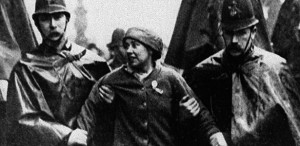
Sylvia Pankhurst at a suffrage protest in Trafalgar Square (1912) Time & Life Pictures/Getty Images
Although Sylvia remained loyal to the WSPU, she believed fervently that women’s emancipation could not be achieved in isolation from socialism, and she was keen to align herself with the needs of working women. In 1913 she established a new organisation, the East London Federation of Suffragettes (ELF) and became involved in worker and trades union struggles. Like the WSPU, the ELF carried out acts of militancy and organised demonstrations. Sylvia was imprisoned on several occasions, participated in hunger strikes and endured the painful ordeal of force feeding. She recorded her experiences which were later published as a book, Writ on Cold Slate, in 1922:
Presently I heard footsteps approaching, collecting outside my cell. I was strangled with fear. There were six of them, much bigger and stronger than I. They flung me on my back on the bed and held me down by shoulders, knees, hips and ankles.
My eyes were shut… I set my teeth and tightened my lips over them… A man’s hands were trying to force my mouth open… his fingers were trying to pull my lips apart as a screw was turned… they were trying to get the tube down my throat… though I suppose I was unconscious of anything by then for they said, at last, ‘that’s all’ and I vomited as the tube came up. Day after day the same struggle… sometimes I felt the tube go right down into my stomach, a sickening terrifying sensation.
(contnued in part 2 …)




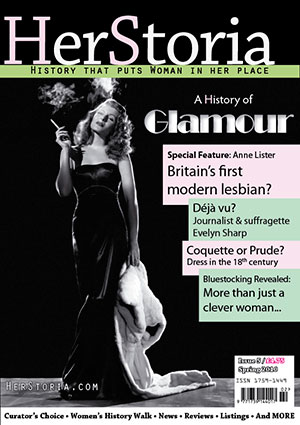
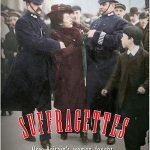
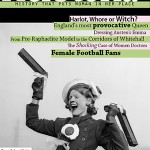
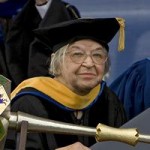
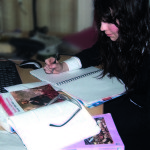
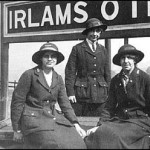
Leave a Reply